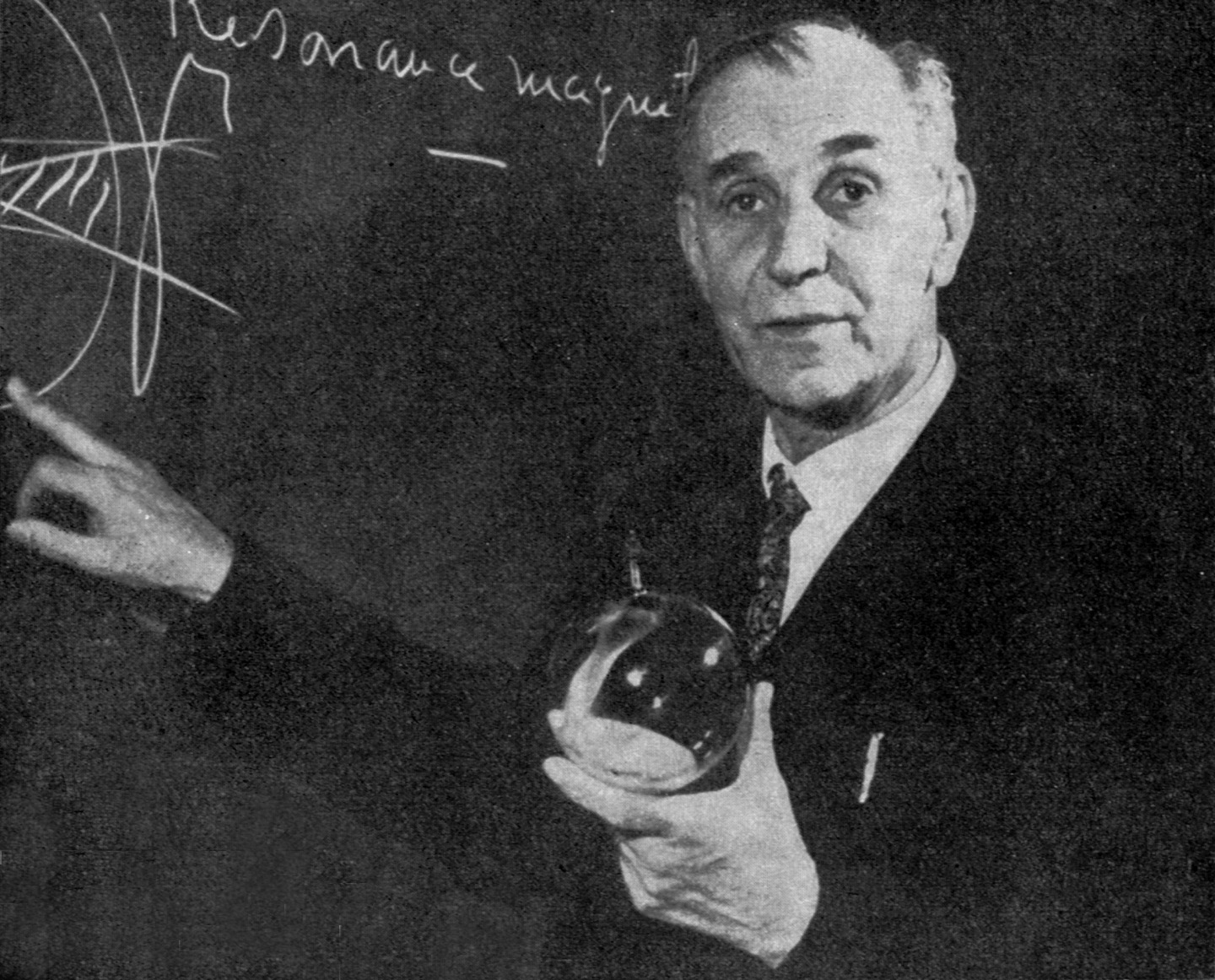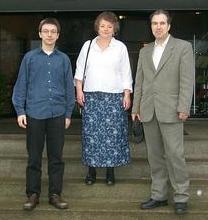|
Julius Richard Büchi
Julius Richard Büchi (1924–1984) was a Swiss logician and mathematician. He received his Dr. sc. nat. in 1950 at ETH Zurich under the supervision of Paul Bernays and Ferdinand Gonseth. Shortly afterwards he went to Purdue University in Lafayette, Indiana. He and his first student Lawrence Landweber had a major influence on the development of theoretical computer science. Together with his friend Saunders Mac Lane, a student of Paul Bernays as well, Büchi published numerous celebrated works. He invented what is now known as the Büchi automaton, a finite-state machine accepting certain sets of infinite sequences of characters known as omega-regular languages. The "''n'' squares' problem", known also as Büchi's problem, is an open problem from number theory Number theory is a branch of pure mathematics devoted primarily to the study of the integers and arithmetic functions. Number theorists study prime numbers as well as the properties of mathematical objects constru ... [...More Info...] [...Related Items...] OR: [Wikipedia] [Google] [Baidu] |
Swiss People
The Swiss people (, , , ) are the citizens of the multi-ethnic Swiss Confederation (Switzerland) regardless of ethno-cultural background or people of self-identified Swiss ancestry. The number of Swiss nationals has grown from 1.7 million in 1815 to 8.7 million in 2020. More than 1.5 million Swiss citizens hold multiple citizenship. About 11% of citizens live abroad (0.8 million, of whom 0.6 million hold multiple citizenship). About 60% of those living abroad reside in the European Union (0.46 million). The largest groups of Swiss descendants and nationals outside Europe are found in the United States, Brazil, and Canada. Although the modern state of Switzerland originated in 1848, the period of romantic nationalism, Switzerland is not a nation-state and the Swiss are not a single ethnic group. Rather, Switzerland is a confederacy (') or ' ("nation of will", "nation by choice", that is, a consociational state), a term coined in conscious contrast to "nation" in the conv ... [...More Info...] [...Related Items...] OR: [Wikipedia] [Google] [Baidu] |
Büchi Automaton
In computer science and automata theory, a deterministic Büchi automaton is a theoretical machine which either accepts or rejects infinite inputs. Such a machine has a set of states and a transition function, which determines which state the machine should move to from its current state when it reads the next input character. Some states are accepting states and one state is the start state. The machine accepts an input if and only if it will pass through an accepting state infinitely many times as it reads the input. A non-deterministic Büchi automaton, later referred to just as a Büchi automaton, has a transition function which may have multiple outputs, leading to many possible paths for the same input; it accepts an infinite input if and only if some possible path is accepting. Deterministic and non-deterministic Büchi automata generalize deterministic finite automata and nondeterministic finite automata to infinite inputs. Each are types of ω-automata. Büchi automata ... [...More Info...] [...Related Items...] OR: [Wikipedia] [Google] [Baidu] |
1984 Deaths
__NOTOC__ The following is a list of notable deaths in 1984. Entries for each day are listed alphabetically by surname. A typical entry lists information in the following sequence: * Name, age, country of citizenship at birth, subsequent country of citizenship (if applicable), reason for notability, cause of death (if known), and reference. Deaths in 1984 January * January 1 ** Alexis Korner, British blues musician and broadcaster (b. 1928) ** Joaquín Rodríguez Ortega, Spanish bullfighter (b. 1903) * January 5 – Giuseppe Fava, Italian writer (b. 1925) * January 6 – Ernest Laszlo, Hungarian-American cinematographer (b. 1898) * January 7 – Alfred Kastler, French physicist, Nobel Prize laureate (b. 1902) * January 9 – Sir Deighton Lisle Ward, 4th Governor-General of Barbados (b. 1909) * January 11 – Jack La Rue, American actor (b. 1902) * January 14 ** Saad Haddad, Lebanese military officer and militia leader (b. 1936) ** Ray Kroc, American entrepreneur (b. 1902) * J ... [...More Info...] [...Related Items...] OR: [Wikipedia] [Google] [Baidu] |
1924 Births
Events January * January 12 – Gopinath Saha shoots Ernest Day, whom he has mistaken for Sir Charles Tegart, the police commissioner of Calcutta, and is arrested soon after. * January 20–January 30, 30 – Kuomintang in China holds its 1st National Congress of the Kuomintang, first National Congress, initiating a policy of alliance with the Soviet Union and the Chinese Communist Party. * January 21 – Alexander Cambridge, 1st Earl of Athlone, The Earl of Athlone is appointed Governor-General of the Union of South Africa, and High Commissioner for Southern Africa.Archontology.org: A Guide for Study of Historical Offices: South Africa: Governors-General: 1910-1961 (Accessed on 14 April 2017) * January 22 – R ... [...More Info...] [...Related Items...] OR: [Wikipedia] [Google] [Baidu] |
Hilbert's Tenth Problem
Hilbert's tenth problem is the tenth on the list of mathematical problems that the German mathematician David Hilbert posed in 1900. It is the challenge to provide a general algorithm that, for any given Diophantine equation (a polynomial equation with integer coefficients and a finite number of unknowns), can decide whether the equation has a solution with all unknowns taking integer values. For example, the Diophantine equation 3x^2-2xy-y^2z-7=0 has an integer solution: x=1,\ y=2,\ z=-2. By contrast, the Diophantine equation x^2+y^2+1=0 has no such solution. Hilbert's tenth problem has been solved, and it has a negative answer: such a general algorithm cannot exist. This is the result of combined work of Martin Davis, Yuri Matiyasevich, Hilary Putnam and Julia Robinson that spans 21 years, with Matiyasevich completing the theorem in 1970. The theorem is now known as Matiyasevich's theorem or the MRDP theorem (an initialism for the surnames of the four principal contributors ... [...More Info...] [...Related Items...] OR: [Wikipedia] [Google] [Baidu] |
Number Theory
Number theory is a branch of pure mathematics devoted primarily to the study of the integers and arithmetic functions. Number theorists study prime numbers as well as the properties of mathematical objects constructed from integers (for example, rational numbers), or defined as generalizations of the integers (for example, algebraic integers). Integers can be considered either in themselves or as solutions to equations (Diophantine geometry). Questions in number theory can often be understood through the study of Complex analysis, analytical objects, such as the Riemann zeta function, that encode properties of the integers, primes or other number-theoretic objects in some fashion (analytic number theory). One may also study real numbers in relation to rational numbers, as for instance how irrational numbers can be approximated by fractions (Diophantine approximation). Number theory is one of the oldest branches of mathematics alongside geometry. One quirk of number theory is ... [...More Info...] [...Related Items...] OR: [Wikipedia] [Google] [Baidu] |
Büchi's Problem
In number theory, Büchi's problem, also known as the ''n'' squares' problem, is an open problem named after the Swiss mathematician Julius Richard Büchi. It asks whether there is a positive integer ''M'' such that every sequence of ''M'' or more integer squares, whose second difference is constant and equal to 2, is necessarily a sequence of squares of the form (''x'' + ''i'')2, ''i'' = 1, 2, ..., ''M'',... for some integer ''x''. In 1983, Douglas Hensley observed that Büchi's problem is equivalent to the following: Does there exist a positive integer ''M'' such that, for all integers ''x'' and ''a'', the quantity (''x'' + ''n'')2 + ''a'' cannot be a square for more than ''M'' consecutive values of ''n'', unless ''a'' = 0? Statement of Büchi's problem Büchi's problem can be stated in the following way: Does there exist a positive integer ''M'' such that the system of equations : \begin x_2^2- ... [...More Info...] [...Related Items...] OR: [Wikipedia] [Google] [Baidu] |
Omega-regular Language
In computer science and formal language theory, the ω-regular languages are a class of ω-languages that generalize the definition of regular languages to infinite words. As regular languages accept finite strings (such as strings beginning in an ''a'', or strings alternating between ''a'' and ''b''), ω-regular languages accept infinite words (such as, infinite sequences beginning in an ''a'', or infinite sequences alternating between ''a'' and ''b''). Formal definition An ω-language ''L'' is ω-regular if it has the form * ''A''ω where ''A'' is a regular language not containing the empty string * ''AB'', the concatenation of a regular language ''A'' and an ω-regular language ''B'' (Note that ''BA'' is ''not'' well-defined) * ''A'' ∪ ''B'' where ''A'' and ''B'' are ω-regular languages (this rule can only be applied finitely many times) The elements of ''A''ω are obtained by concatenating words from ''A'' infinitely many times. Note that if ''A'' is regular, ''A''ω is ... [...More Info...] [...Related Items...] OR: [Wikipedia] [Google] [Baidu] |
Finite-state Machine
A finite-state machine (FSM) or finite-state automaton (FSA, plural: ''automata''), finite automaton, or simply a state machine, is a mathematical model of computation. It is an abstract machine that can be in exactly one of a finite number of ''State (computer science), states'' at any given time. The FSM can change from one state to another in response to some Input (computer science), inputs; the change from one state to another is called a ''transition''. An FSM is defined by a list of its states, its initial state, and the inputs that trigger each transition. Finite-state machines are of two types—Deterministic finite automaton, deterministic finite-state machines and Nondeterministic finite automaton, non-deterministic finite-state machines. For any non-deterministic finite-state machine, an equivalent deterministic one can be constructed. The behavior of state machines can be observed in many devices in modern society that perform a predetermined sequence of actions d ... [...More Info...] [...Related Items...] OR: [Wikipedia] [Google] [Baidu] |
Saunders Mac Lane
Saunders Mac Lane (August 4, 1909 – April 14, 2005), born Leslie Saunders MacLane, was an American mathematician who co-founded category theory with Samuel Eilenberg. Early life and education Mac Lane was born in Norwich, Connecticut, near where his family lived in Taftville, Connecticut, Taftville.. He was christened "Leslie Saunders MacLane", but "Leslie" fell into disuse because his parents, Donald MacLane and Winifred Saunders, came to dislike it. He began inserting a space into his surname because his first wife found it difficult to type the name without a space. He was the eldest of three brothers; one of his brothers, Gerald MacLane, also became a mathematics professor at Rice University and Purdue University. Another sister died as a baby. His father and grandfather were both ministers; his grandfather had been a Presbyterian, but was kicked out of the church for believing in evolution, and his father was a Congregational church, Congregationalist. His mother, Winifre ... [...More Info...] [...Related Items...] OR: [Wikipedia] [Google] [Baidu] |




